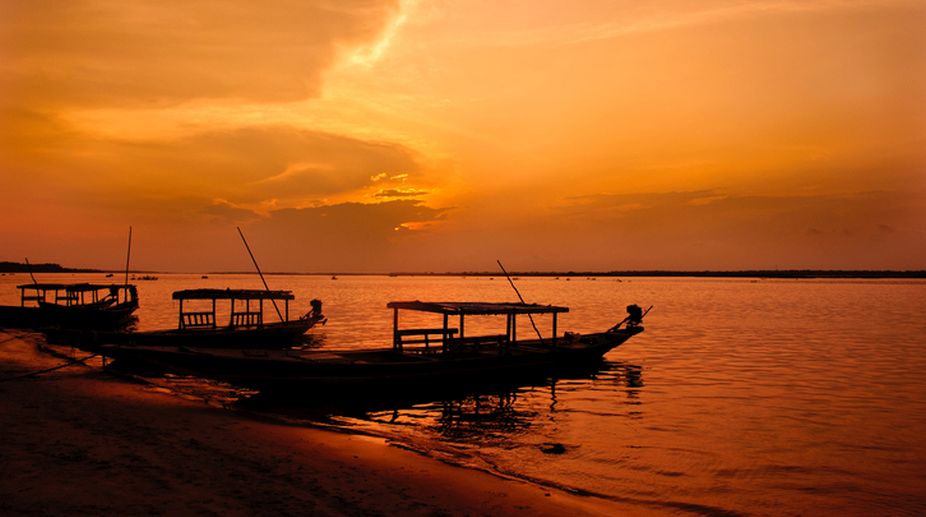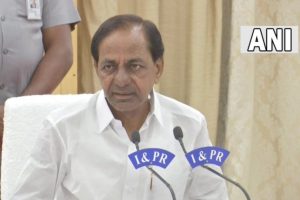The land of Lord Jagannath and the Sun Temple, Odisha is a hidden gem for travellers. The state has a charming culture, centuries-old temples, captivating natural places, a long coastline, wildlife, tribal people and what not. Not only those, Odisha is dotted with numerous Buddhist and Unesco sites.
However, Odisha tourism officials point out that a major problem is that much of the state is on the radar of tourists. However, the state tourism secretary, Arti Ahuja has a different take on it. She says, “I think this is a boon as our destinations are still fresh and not overexposed to death.”
Ahuja was proved right as one found during a five-day tour of the state, exploring several popular as well as hidden destinations. For instance, if one has pilgrimage in mind, the ancient temples of Lord Jagannath in Puri, which has the largest kitchen in the world, beckons the faithful. Or one can visit the famous Konark Sun temple and spend hours admiring the picturesque inscriptions on the walls.
In fact, there is a treasure of temples in old Bhubaneswar dating back to the sixth century. On the other hand, if one seeks picturesque tourist spots, Sambalpur or the wildlife sanctuary of Bhitarkanika is the best choice. If one
is fond of history, then Barbil is the place where they would find 38,000 million-year-old rocks. If one wants to spend some time on the pristine beaches, then the coastline of Gopalpur or the famous brackish water lake,
Chilika are great options.
Odisha borrows its name from Sankrit’s Odra Desh or OdraVishya, which means land of Odra. It was constituted in 1936 but has a long history. The land was ruled by different dynasties like Kalinga, Utkal, Odra, Kosala and Kongoda in different centuries. The state has witnessed the Kalinga War, which transformed Emperor Ashoka and made him turn towards non-violence and Buddhism.
I landed in Bhubaneswar just before dusk. The first impression of the city from the flight was green. Upon landing, the young guide informed that Bhubaneswar, surrounded by three rivers, has its origins 2,000 years back. Most tourists start their exploration of the state from the golden triangle — Bhubaneswar, Konark and Puri. So did I.
The journey started from Bhubaneswar, which is also known as the City of Temples as it has retained temples from the sixth century. The first destination was Dhauli Mountain, 10 km away from the main city. It is the place that witnessed the bloodiest battles of the Kalinga War in 231 BCE. At the foothill, there are 13 rock edicts of Ashoka and a skilfully-sculpted elephant. The rock edicts impart messages of peace and brotherhood in predominantly Pali language. A short walk from there can take one to the Shanti Stupa (Buddhist Peace Pagoda), which was built in the early 70s by the Japan Budhha Sangha and Kalinga Nippon Buddha Sangha.
The next morning was saved for Ekamras walks. It is a two-km guided walk through the old town area, which is full of temples and well-preserved monuments. Earlier there were over 5,000 temples but now the number has reduced to somewhere around 500. One will come across the Mukteswar temple, Parsurameswar, Ananta Vasudev, Lingaraj (the biggest temple in Odisha), Chitrakarini, Vaitaal temples and Ekamra Van, the medicinal plant garden on the western bank of the Bindusagar Lake.
Twenty-two km from Bhubaneswar, on the way to Puri, one can’t help stopping at the small village of Pipli. The village is famous for appliqué and patachitra art forms. Every home in the small village is laden with coloured fabric and tiny mirrors that the artisans turn into stunning lampshades, umbrellas, wall-hangings, canopies, bags and other
decorative items. The village is full of artists, who make applique chattris and tarasa (heart-shaped wooden structures covered with appliqué work and supported on pikes) lend colour to religious processions.
The next destination was Puri, which is considered one of the four most sacred places for Hindus. It is an example of the finest specimen of Odisha temple architecture — the magnificent 192 ft high 12th-century structure is a place of reverence for millions of Hindu pilgrims. The temple consists of four distinct buildings —Vimana, Jagmohana, Natamandapa and Bhogamandapa.
Inside the temple are the images of Jagannath, Balabhadra and Subhadra. Other than those, miniature images of Laxmi, Saraswati and Madhavi are also worshipped. Lord Jagannath is the family god of most households in Odisha and holds a unique place in their lives and customs.
The temple also organises one of the most colourful festivals, the Rath Yatra, in June or July. Millions of devotees draw the traditionally decorated giant wooden chariots with gigantic wheels. The chariots, with the three deities
seated in their respective vehicles, are drawn from the abode of Lord Jagannath in Gundicha temple and return after nine days amid intense fervour.
From the Jagannath temple, a visit to Puri beach is a must. It is considered one of the cleanest beaches in India and one can find a lot of trinkets and souvenirs.
Around 35 km from Puri and 65 km from Bhubaneswar is the beautiful and peaceful city of Konark, located on the seashore. The city houses one of the most stunning Unesco world heritage monuments, the Sun Temple.
Legend says it was built on the sea front with water lashing its walls but now the sea has receded. Built by the Ganga Dynasty, one can’t say what it was in its heydays as the temple has lost many of its original structures with the
ravages of time and now is left with only Mukhasala or the porch and the Nata Mandapa or the dance pavilion. The temple has gigantic statues of elephants and horses and other than those; the sculptures depict erotic love scenes, war and dance. The city also houses a museum, which has a rich collection of sculptures, panels and other artefacts
of the Sun Temple. One could end the trip by walking down the clean Chandrabhaga beach, which is just three km away from the Sun Temple.
After the Golden Triangle, if one is still left with a spare day, the Buddhist circuit should be on the itinerary. Even though the Buddha never visited Odisha during his lifetime, his imprint can be found everywhere in the state. The famous Chinese pilgrim Hieun Tsang had visited Odisha in the seventh century and found Buddhism flourishing there.
The state is blessed with several significant Buddhist sites such as Dhauli, Lalitgiri, Ratnagiri and Udaygiri, which attract tourists and researchers. Lalitgiri is believed to be one of the earliest Buddhist complexes in the world
— it has rock-cut caves, monasteries, viharas, stupas, and caskets. Ratnagiri has ruins, sculptures, large monasteries and shrines. Udaygiri is the largest Buddhist site in Orissa and is famous for the Avalokitesvara statue of Lord
Buddha.
A visit to Odisha is incomplete without dropping by Chilika Lake. It is the largest inland lake of the country with brackish water and stretches through the districts of Puri, Khorda and Ganjam. The lake is dotted with a host
of islands. One can spot dolphins round the year and in winter the place is home to migratory and resident birds.











